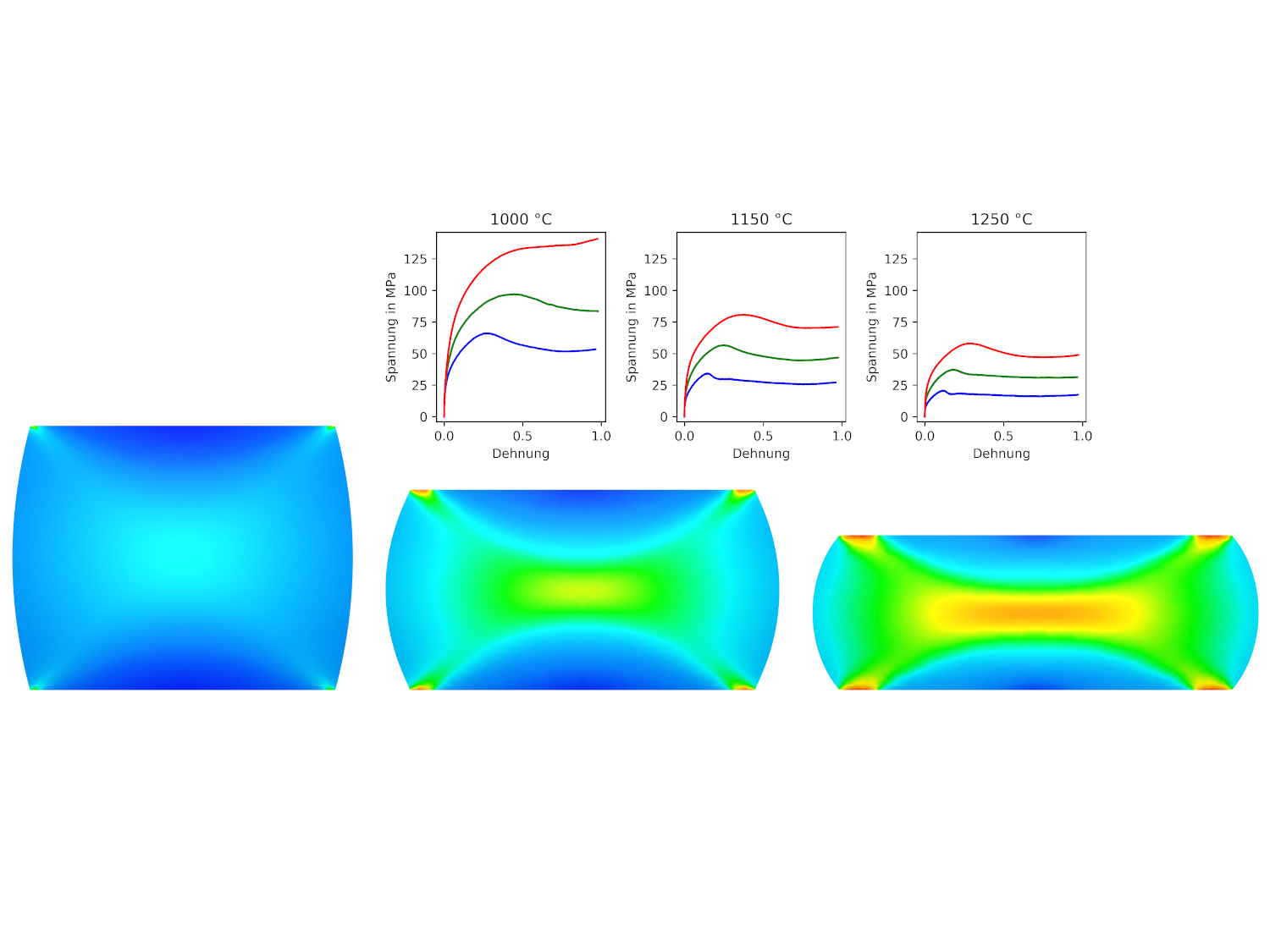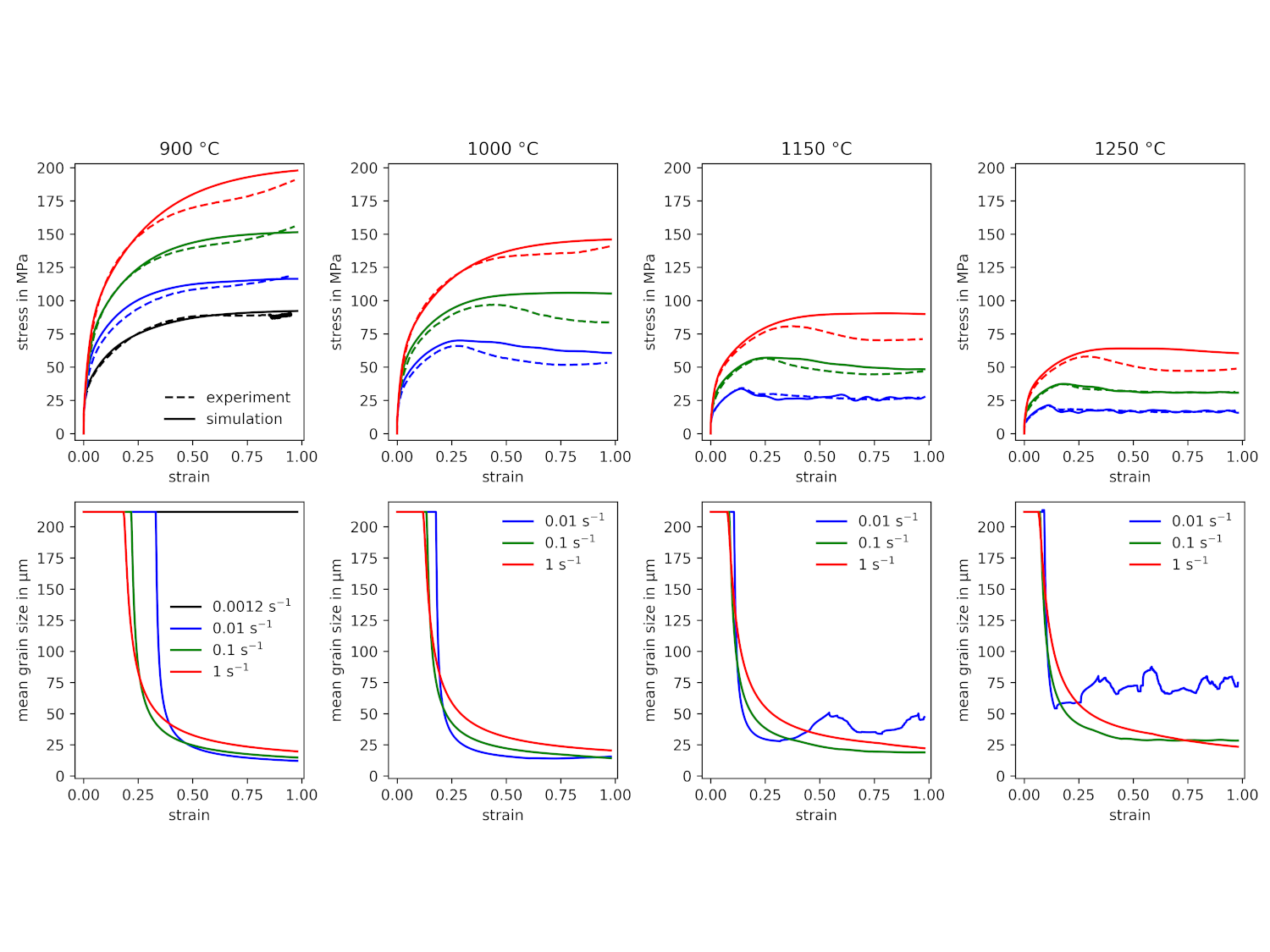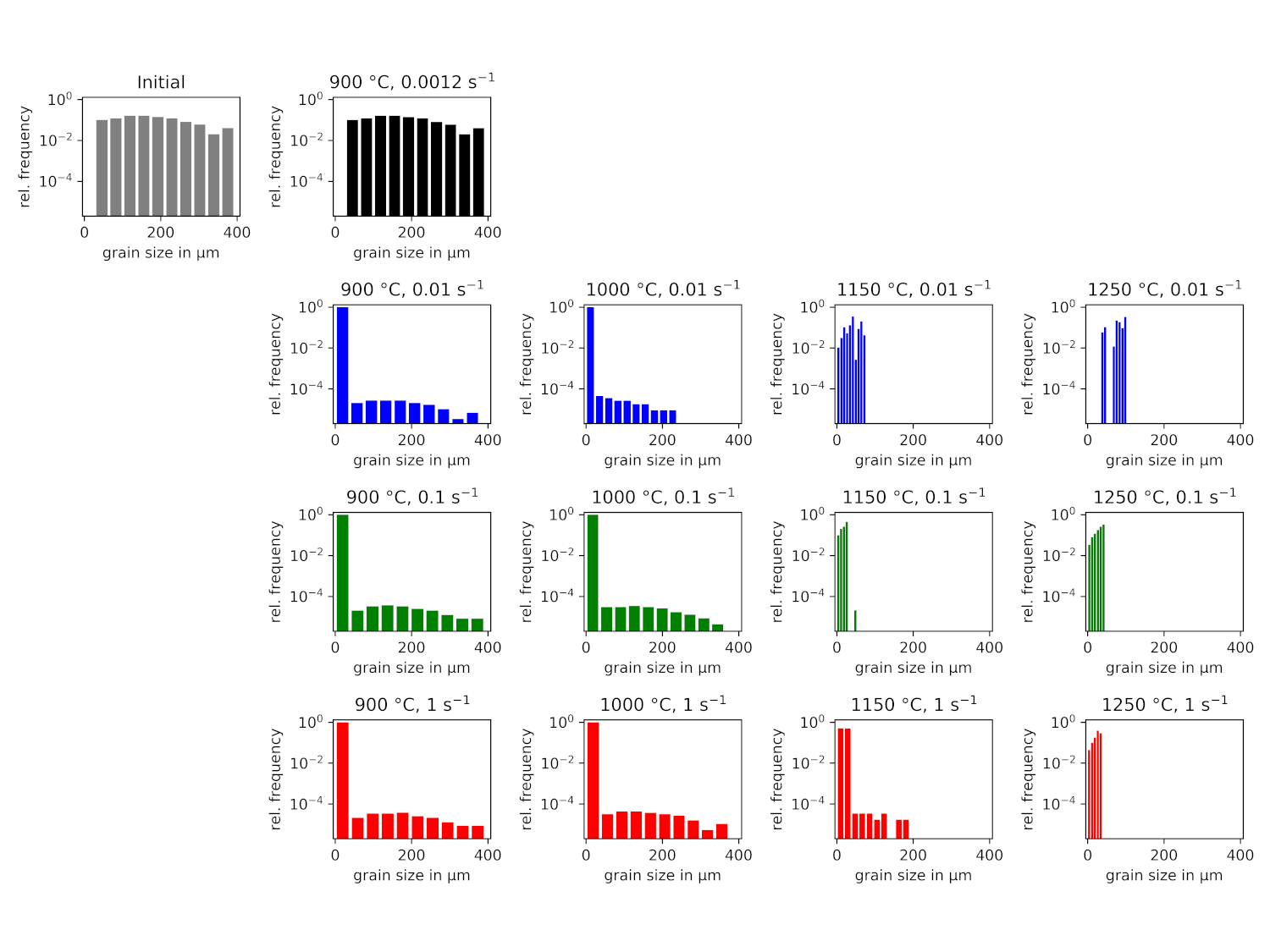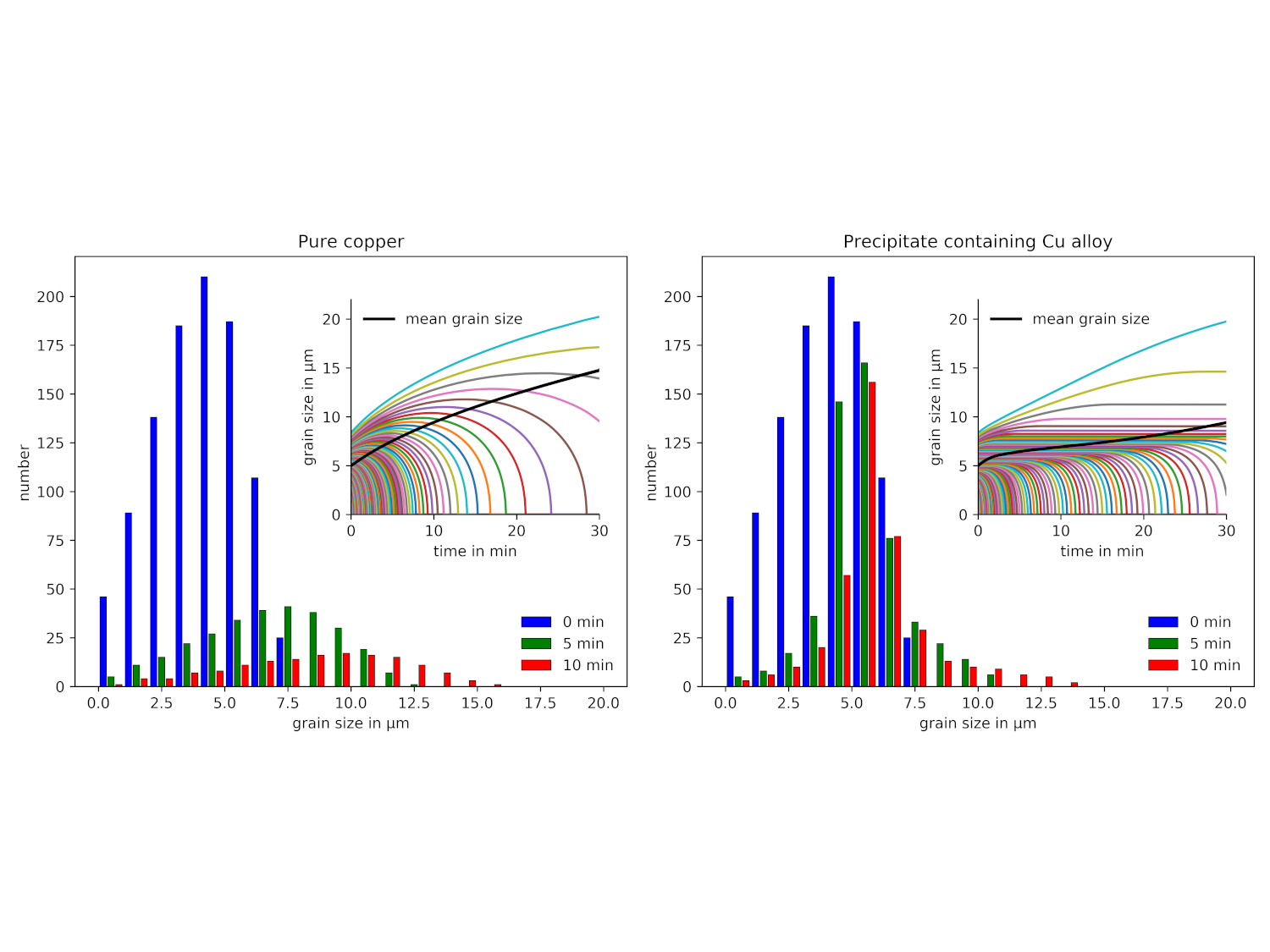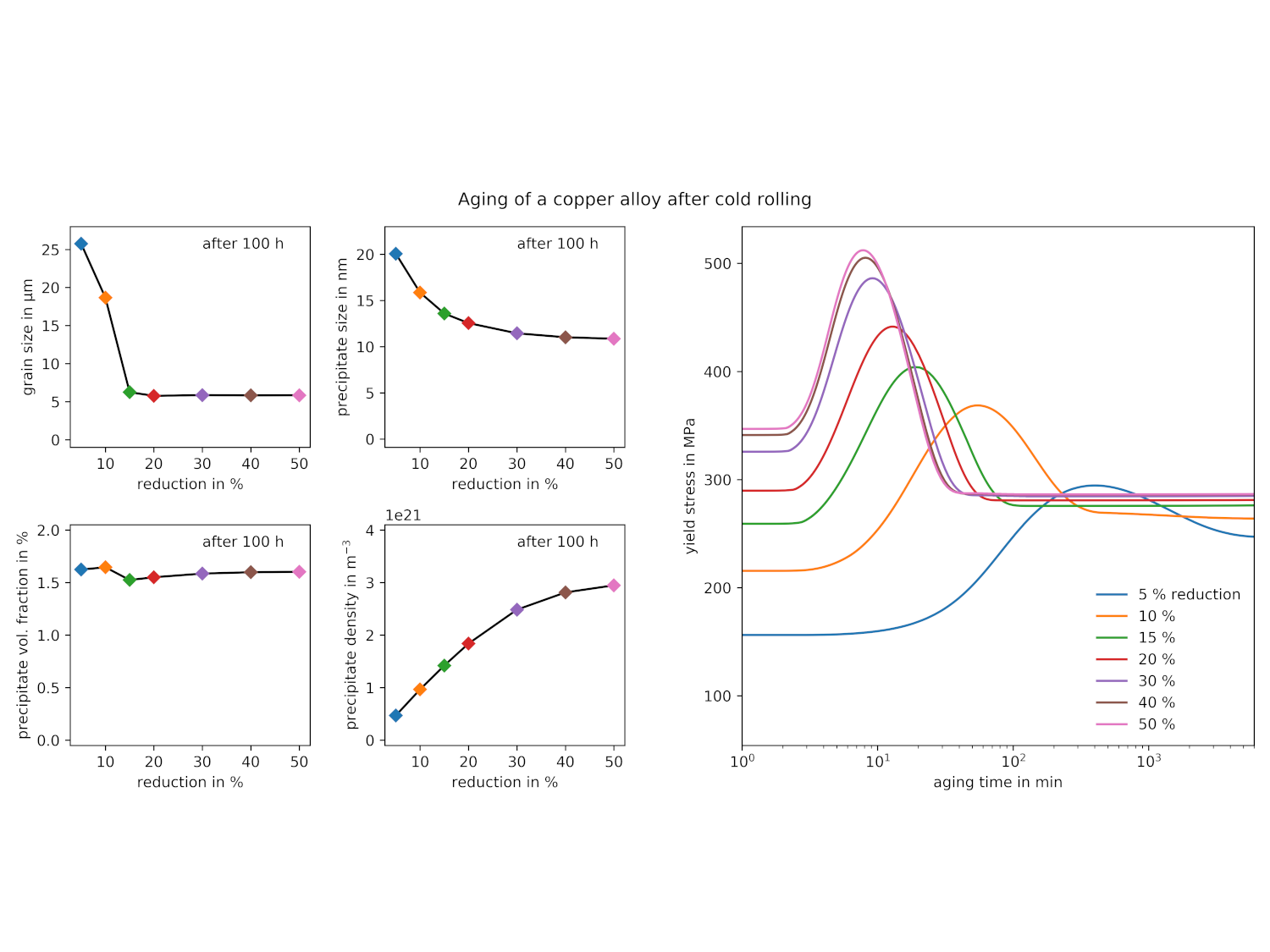Using novel approaches, we enable the detailed simulation of material behavior of metallic materials in hot forming and heat treatment. Our approach links thermo-mechanical material behavior and microstructure evolution using a comprehensive thermodynamic approach. This allows us to efficiently model viscoplasticity, recovery, recrystallization, grain coarsening, texture evolution, and precipitation, as well as the associated strengthening and softening processes. Despite the complexity of the material model, parameter determination requires limited effort because most parameters have clear physical meaning.
The material model is implemented as a program for process simulation, which can be used to predict thermo-mechanical material behavior and microstructure evolution. Besides its application for thermo-mechanically coupled simulations, it can be used for post-processing of forming simulations with commercial finite element simulations. The program can be applied to hot and cold forming processes, heat treatment and any combination of these processes. This allows us to model an entire process chain without having to transfer data from one model to another between the steps. Typical applications are the design, evaluation, and optimization of process routes. Furthermore, applications in process control are conceivable.
 Fraunhofer Institute for Mechanics of Materials IWM
Fraunhofer Institute for Mechanics of Materials IWM